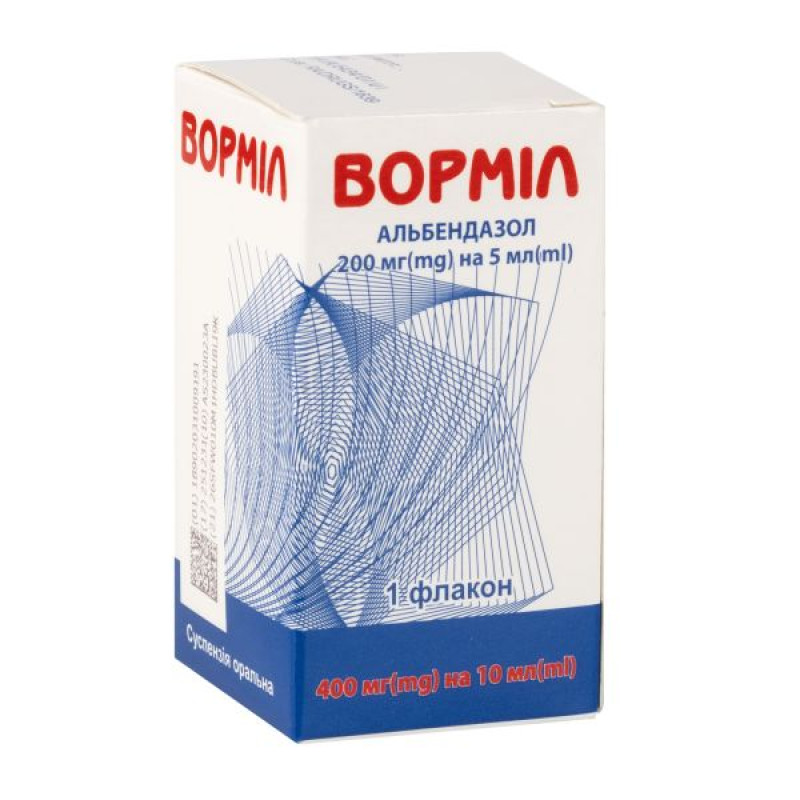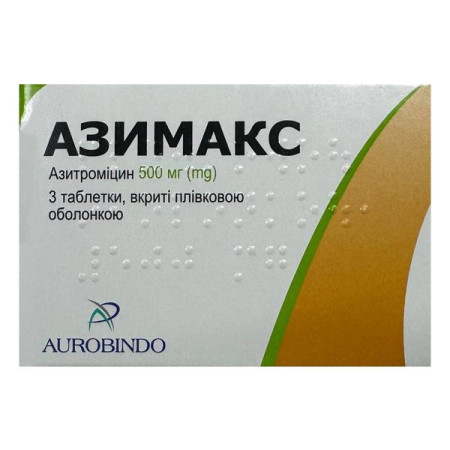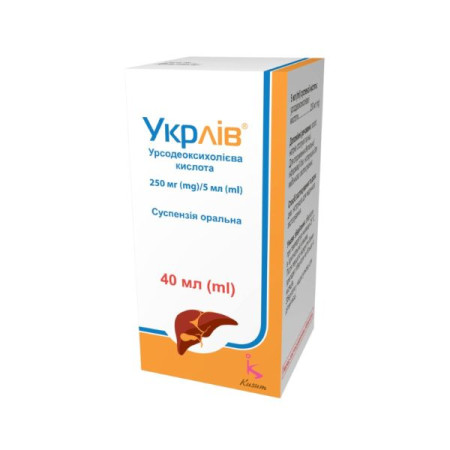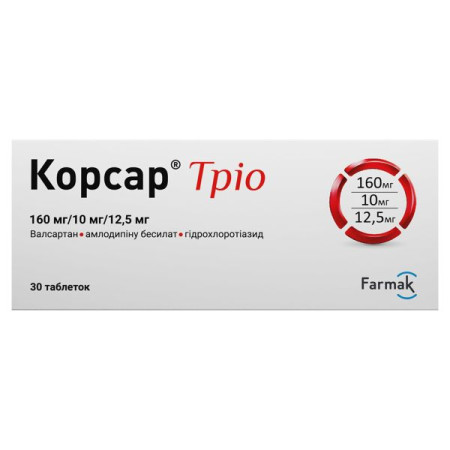Wormil oral suspension 400 mg/10 ml

Instructions for Wormil oral suspension 400 mg/10 ml
Composition
active ingredient: albendazole;
5 ml of suspension contain 200 mg of albendazole;
excipients: sodium benzoate (E 211), xanthan gum, sucrose, sodium methylparaben (E 219), sodium propylparaben (E 217), glycerin, polysorbate 80, disodium edetate, erythrosine dye (E 127), aspartame (E 951), citric acid monohydrate, raspberry flavor, fruit flavor, purified water.
Dosage form
Oral suspension.
Main physicochemical properties: pink suspension in glass vials.
Pharmacotherapeutic group
Anthelmintic agents. Agents used in nematodoses. Benzimidazole derivatives. ATX code P02C A03.
Pharmacological properties
Pharmacodynamics.
Albendazole is a broad-spectrum antiprotozoal and anthelmintic drug from the benzimidazole carbomate group. The drug acts on both intestinal and tissue parasites in the form of eggs, larvae and adult helminths. The anthelmintic effect of albendazole is due to the inhibition of tubulin polymerization, which leads to metabolic disorders and the death of helminths.
Albendazole is active against the following intestinal parasites: nematodes - Ascaris lumbricoides, Trichuris trichiura, Enterobius vermicularis, Ancylostoma duodenale, Necator americanus, Strongyloides stercoralis, Cutaneus Larva Migrans; cystodes - Hymenolepsis nana, Taenia solium, Taenia saginata; trematodes - Opisthorchis viverrini, Clonorchis sinensis; protozoa - Giardia lamblia (intestinalis or duodenalis).
Albendazole is active against tissue parasites, including cystic and alveolar echinococcosis caused by Echinococcosus granulosus and Echinococcosus multilocularis, respectively. Albendazole is effective in the treatment of neurocysticercosis caused by larval Taenia solium, capillariasis caused by Capillaria philippinensis, and gnathostomiasis caused by Gnathostoma spinigerum.
Albendazole destroys cysts or significantly reduces their size (up to 80%) in patients with granular echinococcosis. After treatment with albendazole, the number of nonviable cysts increases to 90% compared with 10% in untreated patients. After the use of albendazole for the treatment of cysts caused by Echinococcus multilocularis, complete recovery was observed in a minority of patients, and in the majority - improvement or stabilization of the condition.
Pharmacokinetics.
After internal use, the drug is poorly absorbed (up to 5%) from the digestive tract. Simultaneous use with fatty food increases the absorption of the drug by approximately 5 times.
Albendazole is rapidly metabolized in the liver during the first pass. The main metabolite, albendazole sulfate, retains half the pharmacological activity of the parent substance.
The half-life of albendazole sulfate from blood plasma is approximately 8.5 hours. Albendazole sulfate and other metabolites are excreted mainly in the bile, and only a small part is excreted in the urine. After prolonged use of the drug in high doses, its excretion from the cysts lasts several weeks.
Indication
Intestinal forms of helminthiasis and cutaneous syndrome Larva Migrans (short-term treatment with low doses): enterobiasis, hookworm and necatoriasis, hymenolepidosis, teniasis, strongyloidiasis, ascariasis, trichocephalosis, clonorchiasis, opisthorchiasis, cutaneous syndrome Larva Migrans, giardiasis in children.
Systemic helminth infections (long-term treatment with high doses):
cystic echinococcosis (caused by Echinococcus granulosus):
if surgical intervention is not possible;
before surgery;
after surgery, if preoperative treatment was short, if helminths are prevalent or live forms were found during surgery;
after percutaneous cyst drainage for diagnostic or therapeutic purposes;
Alveolar echinococcosis (caused by Echinococcus multiocularis):
in inoperable disease, particularly in cases of local or distant metastases;
after palliative surgery;
after radical surgery or liver transplantation;
Neurocysticercosis (caused by Taenia solium larvae):
in the presence of single or multiple cysts or granulomatous brain lesions;
with arachnoid or intraventricular cysts;
with racemose cysts;
capillarosis (caused by Capillaria philippinensis), gnathostomiasis (caused by Gnathostoma spinigerum and related species), trichinosis (caused by Trichinella spiralis and
T.pseudospiralis), toxocariasis (caused by Toxocara canis and related species).
Contraindication
Hypersensitivity to albendazole, other benzylidazole derivatives, to other components of the drug. Retinal diseases. Women planning to become pregnant. Women of reproductive age should use effective non-hormonal contraceptives during and for 1 month after treatment with the drug.
Interaction with other medicinal products and other types of interactions
Albendazole induces enzymes of the cytochrome P450 system.
Drugs that may slightly reduce the effectiveness of albendazole: anticonvulsants (e.g. phenytoin, fosphenytoin, carbamazepine, phenobarbital, primidone), levomizol, ritonavir.
Patients should be monitored for treatment efficacy and alternative dosing regimens or therapies may be necessary.
Grapefruit juice also increases the plasma levels of albendazole sulfoxide.
Due to possible disruption of cytochrome P450 activity, there is a theoretical risk of interaction with the following drugs: oral contraceptives, anticoagulants, oral hypoglycemic agents, theophylline.
When albendazole is used simultaneously with theophylline, theophylline levels in the blood should be monitored.
The systemic effect is increased if the drug is taken with food.
Application features
Short-term treatment of intestinal infections and cutaneous syndrome Larva Migrans.
To prevent the use of Wormil during early pregnancy, women of reproductive age should be treated in the first week after menstruation or after a negative pregnancy test. Reliable contraception is necessary during therapy.
Treatment with albendazole may reveal pre-existing neurocysticercosis, especially in areas with high levels of infection with Tenia solium strains. Patients may develop neurological symptoms, such as seizures, increased intracranial pressure, and focal symptoms due to the inflammatory response caused by the death of the parasites in the brain. Symptoms may occur rapidly after treatment, so appropriate therapy with corticosteroids and anticonvulsants should be initiated immediately.
Long-term treatment of systemic helminth infections.
Albendazole treatment is associated with mild to moderate elevations in liver enzymes, which usually return to normal after discontinuation of treatment. Cases of hepatitis have been reported. Therefore, liver enzymes should be monitored before each course of treatment and at least every 2 weeks during treatment. If liver enzymes increase significantly (more than 2 times the upper limit of normal), albendazole treatment should be discontinued. Treatment may be resumed after normalization of the enzymes, but the patient should be closely monitored.
Albendazole can cause bone marrow suppression, so the patient's blood tests should be performed both at the beginning of treatment and every 2 weeks during the 28-day cycle. Patients with liver disease, including hepatic echinococcosis, are more prone to bone marrow suppression, resulting in pancytopenia, aplastic anemia, agranulocytosis and leukemia, which necessitates careful monitoring of blood counts. In the event of a significant decrease in blood counts, treatment should be discontinued (see sections "Method of administration and dosage" and "Adverse reactions").
Can be used during mandatory deworming (i.e. prevention) before vaccination, as well as for preventive treatment and twice a year.
Patients with neurocysticercosis treated with albendazole may experience symptoms (e.g., seizures, increased intracranial pressure, and focal symptoms) related to the inflammatory response caused by the death of the parasites. This should be treated with corticosteroids and anticonvulsants. Oral or intravenous corticosteroids are recommended during the first week of treatment to prevent the occurrence of cases of increased cerebral pressure.
To prevent the use of Wormil in women during early pregnancy, as well as in women of reproductive age, you should:
start treatment only after a negative pregnancy test;
warn about the need to use effective contraception during
treatment with the drug and within a month after its withdrawal.
Treatment with albendazole may reveal pre-existing neurocysticercosis, especially in areas with high levels of infection with Tenia solium strains. Patients may develop neurological symptoms, such as seizures, increased intracranial pressure, and focal symptoms due to the inflammatory response caused by the death of the parasites in the brain. Symptoms may occur rapidly after treatment, so appropriate therapy with corticosteroids and anticonvulsants should be initiated immediately.
It should be noted that the preparation contains sucrose, therefore, if you have an intolerance to some sugars, consult your doctor before taking this medicine.
The presence of sodium propylparaben and sodium methylparaben in the preparation may cause allergic reactions (possibly delayed).
Use during pregnancy or breastfeeding
The drug is contraindicated for use during pregnancy or breastfeeding and for the treatment of women planning to become pregnant. Breastfeeding should be discontinued during use of the drug.
The ability to influence the reaction speed when driving vehicles or other mechanisms
Given the presence of such a side effect as dizziness, it is recommended to refrain from driving or operating other mechanisms during the period of use of albendazole.
Method of administration and doses
Children from 1 to 2 years old with enterobiasis, hookworm, necatoriasis, ascariasis, trichinosis should be prescribed 5 ml of suspension (200 mg) once a day.
Adults and children over 2 years of age with enterobiasis, hookworm, necatoriasis, ascariasis, trichinosis should take the drug orally, 10 ml of suspension (400 mg) once a day.
If a diagnosis of strongyloidiasis, teniasis and hymenolepidosis is established, the drug should be administered to adults and children aged 2 years and older, 10 ml of suspension (400 mg) once a day for 3 days. For hymenolepidosis, a repeated course of treatment is recommended in the interval from the 10th to the 21st day after the previous course.
For opisthorchiasis and clonorchiasis, adults and children aged 2 years and older should be prescribed the drug according to
10 ml of suspension (400 mg) 2 times a day for 3 days. This regimen is also effective in mixed infestations of Opisthorhis viverrini and Clonorchis sinensis.
For giardiasis, children aged 2 to 12 years should use the drug 10 ml of suspension (400 mg) once a day for 5 days.
For cutaneous Larva Migrans syndrome, the drug should be used in adults and children aged 2 years and older, 10 ml of suspension for 1-3 days.
Systemic helminth infections (long-term treatment with high doses).
Take the drug with food. Shake before use.
High doses of the drug are not recommended for children under 6 years of age. The dosage regimen is set individually depending on age, body weight, and the severity of the infection.
The dose for patients with a body weight of more than 60 kg is 400 mg (10 ml of suspension) 2 times a day. For patients with a body weight of less than 60 kg, the drug is prescribed at the rate of 15 mg/kg/day.
This dose should be divided into 2 doses. The maximum daily dose is 800 mg.
| Infection | Duration of reception |
Cystic echinococcosis | 28 days. The 28-day cycle can be repeated (a total of 3 times) after a 14-day break. |
Inoperable and multiple cysts | Up to 3 28-day cycles for the treatment of hepatic, pulmonary and peritoneal cysts. In the case of cysts of other localization (in the bones or brain), longer treatment may be required. |
Before surgery | Two 28-day cycles are recommended before surgery; if surgery is to be performed before these cycles are completed, treatment should be continued as long as possible before surgery. |
After surgery After percutaneous cyst drainage | If a short (less than 14 days) course of treatment was received before surgery or in the case of emergency surgery, two cycles of 28 days should be administered after surgery, separated by a 14-day break in the use of the drug. Similarly, if viable cysts are found or helminth dissemination has occurred, conduct two full cycles of treatment. |
Alveolar echinococcosis | 28 days. The second 28-day course should be repeated after a two-week break in the use of the drug. Treatment can be extended for several months or years. |
Neurocysticercosis* | The duration of treatment is from 7 to 30 days, depending on the response to treatment. The second course can be repeated after a two-week break in taking the drug. |
| Parenchymal cysts and granulomas | The usual duration of treatment is from 7 days (minimum) to 28 days. |
| Arachnoid and intragastric cysts | The usual course of treatment is 28 days. |
| Racemose cysts | The usual course of treatment is 28 days, but may be longer. The duration of treatment is determined by the clinical and radiological response to treatment. |
Capillariasis | 400 mg once a day for 10 days; Usually one course of treatment is required, but subsequent courses may be necessary if parasitological examination results remain positive. |
| Gnathostomiasis | 400 mg once daily for 10-20 days (see above). |
| Trichinosis, toxocariasis | 400 mg 2 times a day for 5-10 days (see above). |
** Appropriate corticosteroid and anticonvulsant therapy should be administered in patients with neurocysticercosis. Oral and intravenous corticosteroids are recommended to prevent cerebral hypertension during the first week of treatment.
Elderly patients
Experience in the elderly is limited. No dose adjustment is required, but albendazole should be used with caution in elderly patients with impaired liver function.
Kidney failure
Since albendazole is excreted by the kidneys in very small amounts, dose adjustment is not required for the treatment of this category of patients, however, if there are signs of renal failure, such patients should be closely monitored.
Liver failure
Children. The drug is contraindicated for the treatment of children under 1 year of age.
Administer to children according to the information provided in the “Method of administration and dosage” section.
Overdose
Symptoms: nausea, vomiting, diarrhea, tachycardia, drowsiness, visual disturbances, visual hallucinations, speech disorders, dizziness, loss of consciousness, liver enlargement, increased transaminase levels, jaundice; respiratory distress, brown-red or orange discoloration of the skin, urine, sweat, saliva, tears and feces in proportion to the dose of the drug used.
Treatment: perform gastric lavage and apply symptomatic and supportive therapy.
Side effects
On the part of the digestive tract and liver: stomatitis, dry mouth, heartburn, nausea, vomiting, abdominal pain, flatulence, diarrhea, constipation, transient increase in liver enzyme activity, jaundice, hepatitis, hepatocellular disorders.
Cardiovascular system: increased blood pressure, tachycardia. Central nervous system and peripheral nervous system: insomnia or drowsiness, headache, dizziness, confusion, disorientation, hallucinations, convulsions, decreased visual acuity.
Blood and lymphatic system disorders: leukopenia; neutropenia; thrombocytopenia; anemia, including aplastic anemia; agranulocytosis, pancytopenia. Patients with liver disease, including hepatic echinococcosis, are more susceptible to bone marrow suppression.
Skin and subcutaneous tissue disorders: skin rash, hyperemia, erythema multiforme, Stevens-Johnson syndrome, alopecia inversa, dermatitis, edema.
Renal and urinary disorders: renal dysfunction, acute renal failure, proteinuria.
Allergic reactions: hypersensitivity reactions, including rash; itching; urticaria; pemphigus; dermatitis; fever.
General disorders: bone pain, sore throat; fever; weakness.
Patients with liver disease, including hepatic echinococcosis, are more prone to bone marrow suppression.
Expiration date
3 years.
Storage conditions
Store at a temperature not exceeding 25 ºС in the original packaging, out of the reach of children.
Packaging
10 ml of the drug in a bottle. 1 bottle in a cardboard box together with instructions for medical use.
Vacation category
According to the recipe.
Producer
Gracure Pharmaceuticals LTD.
Location of the manufacturer and its business address.
E-1105, Industrial Area, Plot III, Bhiwadi, Alwar District, Rajasthan, 301019, India.
Applicant
Milli Healthcare Limited.
Applicant's address: 2nd Floor, Office Building, 4 Chartfield House, Castle Street, Taunton, Somerset, England, TA1 4AS, United Kingdom.
There are no reviews for this product.
There are no reviews for this product, be the first to leave your review.
No questions about this product, be the first and ask your question.













